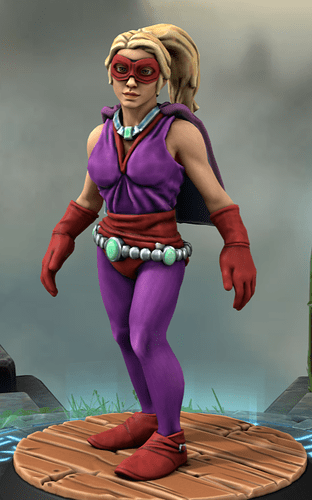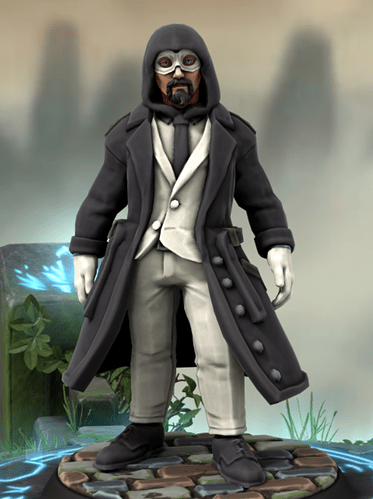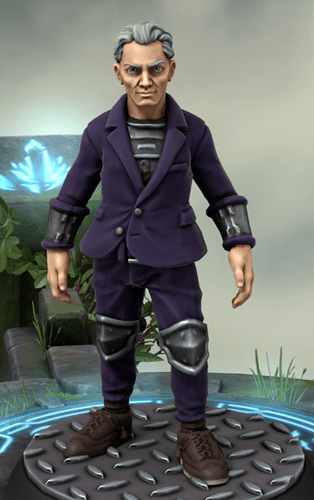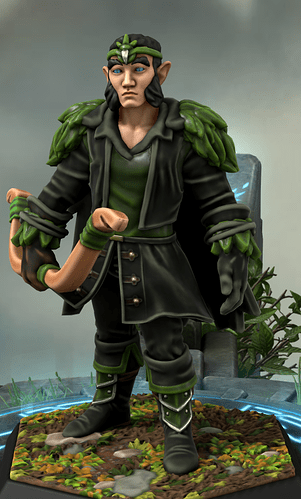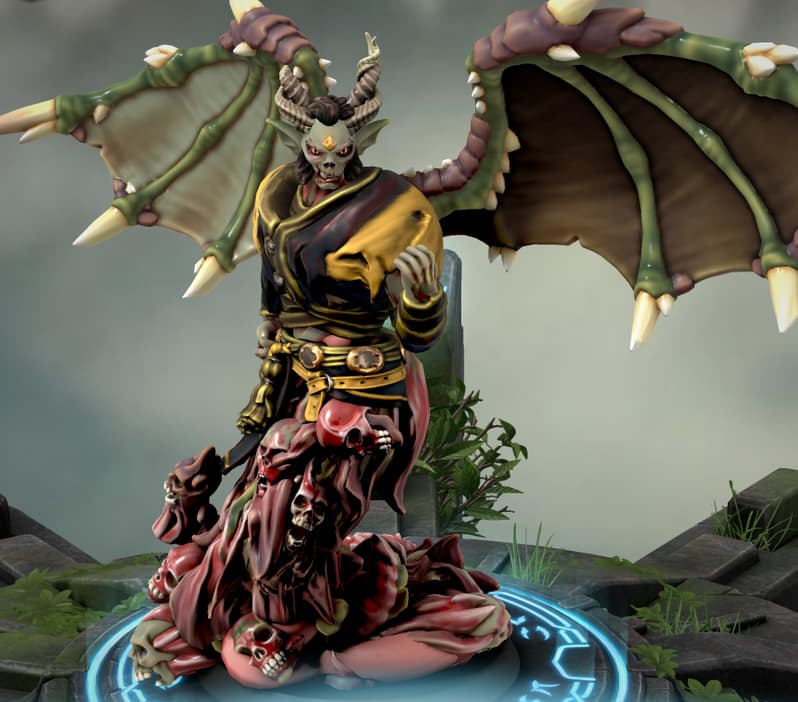And today we wrap up our Golden Age heroes and start in on the villains! By my count, the Golden Age should wrap up about the end of the week, at which point I will be slowing down to daily updates so that anyone interested in conversation has more time (other than Rich, who is on the ball!) and once we catch up fully, it’ll slow down again to M-F updates.
The Randomizers:
Background 2, 7, 7 [Options: Criminal, Law Enforcement, Tragic, Interstellar, Anachronistic]
Power Source 3, 5, 5 [Options: Genetic, Mystical, Powered Suit, Tech Upgrades, Genius]
Archetype 5, 8, 1 [Options: Speedster, Blaster, Close Quarters Combatant, Flyer, Elemental Manipulator, Transporter]
Personality 10, 7, 2 [Options: Natural Leader, Stalwart, Inquisitive, Alluring, Nurturing, Naive]
Revenant
Real Name: Henry Fletcher, First Appearance: Company Town #118, January 1949
Background: Anachronistic, Power Source: Genetic, Archetype: Close Quarters Combatant
Personality: Stalwart, Principles: Immortality, Underworld
Status Dice: Green d8, Yellow d8, Red d8. Health: 30 [Green 30-23, Yellow 22-12, Red 11-1]
Qualities: History d10, Close Combat d10, Stealth d8, Persuasion d8, Cover Identities d8
Powers: Vitality d10, Strength d8, Awareness d8, Presence d6
Green Abilities:
-
Ancient Recall [A]: Boost yourself using History. That bonus is persistent and exclusive.
-
Boxing Stance [A]: Defend using Vitality. Attack using your Min die.
-
Flexible Stance [A]: Take any two basic actions using Awareness, each using your Min die.
-
Power Stance [A]: Attack using Close Combat. Use your Max die.
-
Principle of Immortality [A]: Overcome a situation involving your physical condition and use your Max die. You and your allies gain a Hero Point.
-
Principle of the Underworld [A]: Overcome a problem related to your knowledge of the criminal underworld or using one of your contacts and use your Max die. You and your allies gain a Hero Point.
Yellow Abilities:
-
The Immortal Man [A]: Boost yourself using Vitality, then either remove a penalty on yourself or Recover using your Min die.
-
Age and Treachery [A]: Attack using Close Combat. Ignore all penalties on this Attack, ignore any Defend actions, and it cannot be affected by Reactions.
-
Danger Sense [R]: When damaged by an environment target or surprise Attack, Defend by rolling your single Awareness die.
Red Abilities
-
Impossible Recovery [A]: Hinder yourself using Vitality. Use your Min die. Recover health equal to your Max+Mid dice.
-
Super-Senses (I): When taking any action using Awareness, you may reroll your Min die before determining effects.
Out
- Defend an ally by rolling your single Vitality die.
By January 1949, the world was changing. Superheroes were falling out of fashion, war in Korea loomed, and the editors of Company Town saw a chance to return the comic to the dark roots that had been largely upended by the addition of Flatfoot to the comic’s pages. Inspired by the recent successful launch of the Wraith in the pages of Sentinel Comics, they proposed a new hero be added to the comic - someone who would fight criminals on their own terms, attacking cowardly mobsters in the name of the innocent.
Their proposal was Revenant, and he would prove to be a very popular but short-lived entry into the Golden Age of Venture Comics.
Revenant’s real name was Henry Fletcher, a man living in Renaissance England who, upon dying of plague, found himself miraculously returned to life. Over the centuries, Fletcher would continue to die on a regular basis, each time reviving within hours to continue his travels. Eventually, Fletcher came to America, and found himself in Ferristown. Unable to sign up for the war due to lacking citizenship papers, he instead saw the criminal element preying on those who were left behind, and took up arms as the Revenant, striking from the shadows to undo criminal conspiracies and protect the people of the city.
Revenant had false identities around the city, which he used to gain access to criminal organizations and destroy them from within, using centuries of knowledge to take on whatever role was needed for the night. Many of his stories ended with him gunned down by criminals, only to rise and take revenge, a terrible spectre that stalked the night. Although his stories were taking place in the same city as Flatfoot’s, the two heroes never met; Revenant focused on the poorest and most vulnerable districts, while Flatfoot’s stories were brighter and more hopeful.
Revenant was largely a pulp-horror throwback with superhero leanings, and his presence in the pages of Company Town helped to bring the title back towards tales of grim corruption and political brutality. The editors might not have been as thrilled about this fact if they knew what was on the horizon, but for the time being, he was another successful entry in the history of Venture Comics.
Behind the Scenes
When I got Anachronistic, I had planned to make an actual vengeful ghost, but then Genetic popped up and the idea of making an immortal guy seemed kind of fun. There are a couple of similarities with Haka here, and I bet fans of Sentinel Comics claim that Revenant’s immortal nature was obviously just copying Haka, but in the metaverse it’s probably a coincidence, especially since they aren’t otherwise similar.
There are a couple Revenants in comics in the real world, with my favorite being the Batman-alike of PS238; this Revenant is quite different from him, too, but in the world of Venture Comics, that Revenant probably had a different name. The Bat, perhaps.

